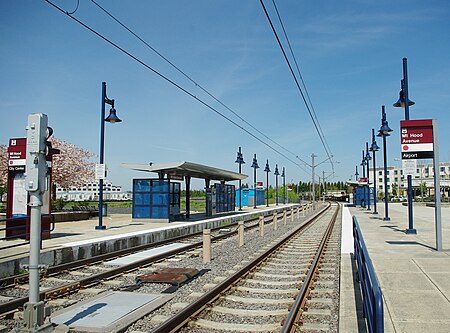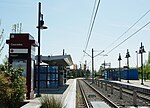Mount Hood Avenue station
2001 establishments in OregonMAX Light Rail stationsMAX Red LineOregon building and structure stubsOregon transportation stubs ... and 4 more
Railway stations in Portland, OregonRailway stations in the United States opened in 2001Tram stubsWestern United States railway station stubs

Mount Hood Avenue station is a light rail station on the MAX Red Line in Portland, Oregon. Located at the northern end of the Cascade Station development, it is the 2nd stop north on the Airport MAX. The street for which it is named, Mount Hood Avenue, is located about 1,200 feet (370 m) southeast of the station. Mount Hood is approximately 40 miles (64.3 km) away from the station.
Excerpt from the Wikipedia article Mount Hood Avenue station (License: CC BY-SA 3.0, Authors, Images).Mount Hood Avenue station
Northeast Cascades Parkway, Portland
Geographical coordinates (GPS) Address Nearby Places Show on map
Geographical coordinates (GPS)
| Latitude | Longitude |
|---|---|
| N 45.5771 ° | E -122.567147 ° |
Address
Mount Hood Avenue
Northeast Cascades Parkway
97200 Portland
Oregon, United States
Open on Google Maps









